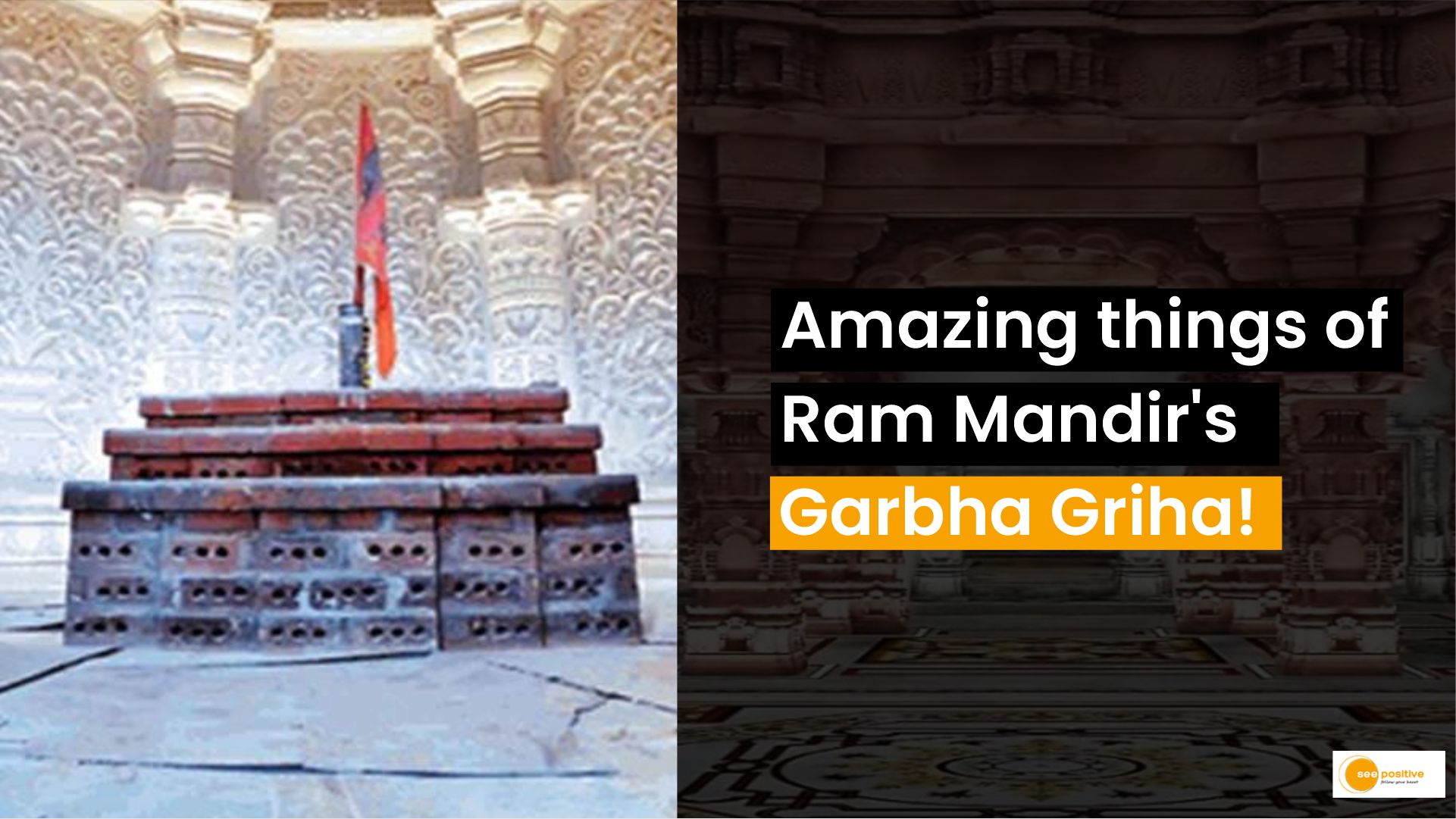In the heart of Ayodhya, a divine spectacle is set to unfold on January 22, 2024, at 12:20 pm. The consecration ceremony of Ram Lalla at the Ram Temple marks a momentous occasion, highlighting the grandeur of the garbha griha, the sanctum sanctorum where the 5-year-old child form of Lord Ram will reside.
Measuring an impressive 20 feet in length, 20 feet in width, and with a height of 161 feet, the garbha griha stands as one of the largest sanctum sanctorums worldwide. Its deliberate architectural choices include the absence of windows, creating an atmosphere of divine focus and tranquility for devotees. This sacred space is meticulously designed to allow devotees to concentrate on the embodiment of the divine idol without distraction.
For devotees with disabilities or the elderly, the temple ensures accessibility with ramps and lifts. Upon entering from the east, visitors will climb 32 stairs through Singhdwar. The temple will be surrounded by rectangular ramparts, towering walls with a total length of 732 meters and a width of 14 feet.
Four temples dedicated to Sun God, Mother Bhagwati, Ganapati, and Lord Shiva will adorn the four corners of these forts. Maa Annapurna’s temple will grace the northern arm, while Hanuman Ji’s temple will stand proudly in the southern arm. Sitakoop of ancient times will be established near the temple, connecting the present to the rich history of Ayodhya.
What is the shape of the Garbha Griha?
The garbha griha is traditionally square-shaped, with three enclosing walls and a single entry door. Elevated on a platform symbolizing the microcosm of the universe, the deity’s idol takes center stage, turning the garbha griha into the temple’s sacred nucleus.
The meticulous design ensures that only one door is attached to the garbh griha, and the premises are surrounded by walls on the other three sides, enhancing the sanctity of the space.
In which position the idols are placed in Garbha Griha?
The placement of idols within the garbha griha varies based on the presiding deity. Idols of Lord Vishnu are typically positioned against the back wall, while the Shivalinga is placed in the center of the sanctum sanctorum.
This arrangement emphasizes the Brahmasthan concept, making the garbha griha a sacred space where the vedi or altar for religious ceremonies is situated. Devotees are reminded of the need for purity and proper attire during darshan, reinforcing the sanctity of this hallowed space.
As we explore further, the temple reveals its remarkable features. In the main sanctum sanctorum, the child form of Lord Shri Ram (deity of Shri Ram Lalla Sarkar) will take center stage. On the first floor, the court of Shri Ram will be situated.
Additionally, the temple boasts five pavilions: dance pavilion, color pavilion, assembly pavilion, prayer pavilion, and kirtan pavilion, adding to the splendor of the sacred space. Idols of various gods, goddesses, and deities adorn the pillars and walls of the temple, creating a mesmerizing ambiance.
Ayodhya Ram Mandir’s garb griha has a Muslim connection
In a remarkable testament to Uttar Pradesh’s rich syncretic traditions, the Ayodhya Ram Mandir’s sanctum sanctorum, known as the garb griha, holds a unique Muslim connection. The Makrana Marble Company, entrusted with carving marble for the temple, is owned by a Muslim individual named Ramzan bhai.
Despite historical acrimony between Hindus and Muslims over the Ayodhya issue, this Muslim-owned company expresses delight and pride in contributing to the construction of the Ram Mandir. The inclusion of a Muslim-owned firm in this revered project exemplifies the inclusive spirit underlying the construction of the Ram Mandir.
Positive Takeaway
As we anticipate the consecration ceremony on January 22, all eyes are on the garbha griha, the soul of Ayodhya’s Ram Temple. This sacred space embodies divinity, inclusivity, and the rich cultural tapestry of Ayodhya.
The upcoming ceremony is not just a construction milestone; it’s a celebration of unity, diversity, and the shared reverence for the divine that transcends historical divides. Ayodhya’s Ram Temple stands not only as a symbol of faith but also as a beacon of inclusivity, bridging communities in the spirit of sacred endeavor.
The Lord Ram statue in Ayodhya’s Ram mandir has been carved by Karnataka-based renowned sculptor Arun Yogiraj. The union minister has shared a photograph of Yogiraj posing alongside the idol of Lord Ram.


